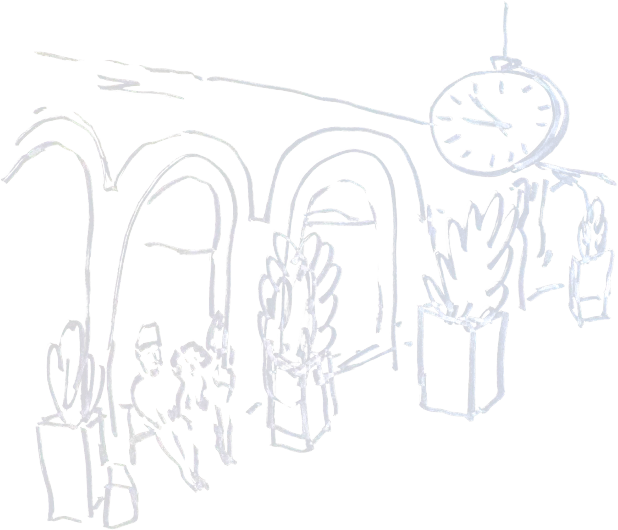I could see myself running a hotel. A little world where the architecture is otherworldly. And of course, the service is impeccable – because nothing matters more in any business than how customers are treated.

But while it’s normal for one night in a hotel to cost ~$300, most people expect the price of a month of using pro-grade software – some of which cost millions of dollars to produce and maintain – to be closer to a cup of coffee. That’s because software is inherently a volume business. While I’m busy fixing something, the app is still being used by everyone else. And when I ship improvements, everyone benefits.
Does it make me feel better when Kinopio is more reliable, lighter-weight, simpler, more powerful, and faster? Well, I’ve been happily doing this kind of tuning all month. And honestly, if I could afford to, I’d keep doing it forever.
When it comes to volume, Kinopio is in this awkward puberty phase, where it doesn’t have enough paid users to be completely self-sustainable yet. But I also get bug reports, feature requests, student discount requests, and emails from really nice people telling me how much they love Kinopio, everyday.
So as much as I enjoy improving code, I also know that my primary focus right now really should be on helping new people find Kinopio – and giving them a really inviting first-impression when they do.
Switching my brain from coding-for-computers to writing-for-humans is a violent gesture. It takes a lot of force and focus to pull that rusty mental switch. So when writing mode finally does click on, I’d like to stay there for a while.
But staying away from code gets tricky once daily support requests start rolling in.
People have this perception of a founder or a CEO as someone who floats above the business, separated from the day-to-day so they can think high-level thoughts about high-level things. But especially if you’re building organic software, you’ll be sneaking peeks at the sky, while wading knee-deep through mud. The way I do it, it’s not a glamorous job.

(I hand-traced this from it’s 1913 source using Dottie)
It’s all too easy to over-optimize the support process. With the incantations provided by enterprise help-desk software, you could cast a barrier that only lets people contact you if they’ve searched the docs first. Or you could make them go through an annoying chat bot trained on those docs. And if someone is patient enough to clear the hurdles, you can effortlessly respond with a fully automated reply.

But treating support like a bean-counter really is missing the forest for the trees. One of the major benefits of buying products made by actual people is the expectation of being able easily to reach out to a real person if you need help.
If you’re not beholden to short-sighted investors, and you’re willing to consider the unmeasurable, and act long-term, then support becomes an opportunity to grow a community which changes the relationship between creator and customer from 1:many to many:many.
I don’t know how unique or interesting my approach is, but here are the tools and habits I use to stop support from becoming overwhelming, without compromising quality.
Embrace Contact
The primary purpose of the help site isn’t to reduce support – it’s to have URLs that I can point people to for commonly asked questions. Some people prefer to use the site to look for answers on their own, while others prefer direct contact. Both are okay.
I also have a support forum and a community chat. People will choose whatever you’re comfortable with, but there are good reasons to use one over the others.
| Type | Pros | Cons |
|---|---|---|
| Everyone knows email, easy to start | Conversations are 1:1 and can’t be shared, hard to keep track of |
|
| Chat (Discord) | 1:many conversations encourage community and faster responses |
Requires a Discord account, old posts are washed away by new ones |
| Forum (Discourse) | Everything is public, Topics are easier to organize work around, Slower pace | Functional nature isn’t the best for casual community discussions |
Making contact easy is just the start of a long road. The shape of a welcoming community, like the shape of a bonsai tree, doesn’t just happen. Without regular care, bonsai fall over and die as their branches crowd each other out for light and nutrients.
Constant Pruning
At least once a day, I check my inbox and read through all the latest updates on the forum and chat. When someone new joins the discord I write them a greeting. Something simple like,
Hi @you, welcome to the Kinopio community chat
I worry that they may think this is just a bot, which I could easily do. But I hand-type it anyways with slight variations to evoke the friendly feeling of being greeted when you walk into a shop or bar – and to show that I, and the other active people here, are listening and want to hear what you have to say.
When you form a community you have a responsibility to actively keep it organized and healthy. When creators and moderators check out of communities, your biggest fans, feeling ignored or betrayed, may become your biggest haters. Passion cuts both ways.

One of the most helpful things that I do to prevent discussions from getting overwhelming is proactively proposing that they be moved elsewhere when it makes sense. Here are some examples of how this plays out IRL:
- Someone
emailsin a niche feature request that may not be used by anyone else. I would ask them to share their ideas and use-cases inchatto see if others are interested. - Multiple people
emailme about the same bug, and others have reported it inchat. I would make aforumtopic for the issue, containing all the repro steps and other debug clues, then share the link with everyone so they can track it’s status. - A non-critical bug is reported in
chatthat I don’t have the bandwidth to investigate right now (maybe because I’m writing a blog post). So I’ll ask them to post it in theforumso I can get back to it once I have time. - In
chat, everyone’s sharing their hopes and hot-takes on a newly proposed feature. It’s getting spicy. I’d ask the OP to start aforumthread and continue the discussion there so that we don’t lose anyone’s ideas later when I’m ready to work on it.
Although changing communication types comes with friction, it’s also a filter. If the user doesn’t feel like making the effort, then it’s fair to assume that they didn’t feel that strongly about their request.
If you had to choose between chat or a forum, you should choose a forum. But if you have a chat, you need a forum. The slower-pace and more async nature of a forum acts as a blow-off valve that lets the steam escape from heated conversations.

Future Support
As Kinopio grows, will I still be able to do support, and build community like this? The advantage of slower growth is that I have the time to pave the desire paths around the needs of real customers.
I know that customer service isn’t the coolest topic. When costs are being cut it’s usually first on the chopping block. But when the world zigs, my passion zags – because why would you care about something made with the same thinking as everything else?
If you have a problem with your 50 year old vintage Leica, Mercedes, or Tag Heuer, they’ll still service it. Even the most well-made things can break, but treating old customers as well as your new customers is what you do when you’re building a company to last beyond you.
And of course, once it exists, you’re welcome at my hotel anytime.

 Kinopio
Kinopio
Comments…
Please try again or email me
Or, discuss this post on Hacker News